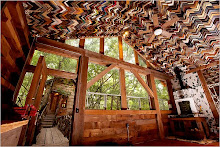 Blonds have been maligned for years, the subject of ill humor and the butt of bad jokes. So what's this latest brouhaha? The plastic used to make her world famous form may not be eco-friendly. "Plastics" as many will recall from the movie "The Graduate" was the word issued by Mr. Robinson to actor Dustin Hoffman as the one material "that will save us all." Fast forward several decades and we've learned that plastic is causing our environment to pay a heavy toll by bein precisely what we expect it to be--indestructible. Sure, we are doing our best to purge ourselves of the need for plastics, but are we willing to supplant the fantasies of young girls from the ages of "3 on up" not to mention the countless collectors, many of them men, who have counted on Barbie's durability to help them sustain their lifelong addictions to the icon? We'll let the experts weigh in.
Blonds have been maligned for years, the subject of ill humor and the butt of bad jokes. So what's this latest brouhaha? The plastic used to make her world famous form may not be eco-friendly. "Plastics" as many will recall from the movie "The Graduate" was the word issued by Mr. Robinson to actor Dustin Hoffman as the one material "that will save us all." Fast forward several decades and we've learned that plastic is causing our environment to pay a heavy toll by bein precisely what we expect it to be--indestructible. Sure, we are doing our best to purge ourselves of the need for plastics, but are we willing to supplant the fantasies of young girls from the ages of "3 on up" not to mention the countless collectors, many of them men, who have counted on Barbie's durability to help them sustain their lifelong addictions to the icon? We'll let the experts weigh in.Testing the environmental safety of the doll, students in the California College Of The Arts' first ever MRA In Design Strategy program recently assessed the level of Barbie's sustainability. Their three year study revealed that each doll consumes the equivalent of 3.2 cups of oil (or 1.127 watts of energy) throughout its production, shipping, and use. Despite Barbie's 25-year life expectancy the test was set for three years, because the scientists discovered that was the life expectancy of the doll in a child's toy arsenal. Not surprisingly 90% of America's girls have at least one of these 11.5 inch dolls, but that is no indication that the average child's interest in them is deep and lasting. Sold in 150 countries worldwide, Barbie has become a $1.5 billion dollar-per-year industry -- but without plastic, she'd be another crustacean by now and it's doubtful that information of impending eco disaster will detour any true Barbie fans. More than likely, this may be one dirty (blond) cultural vice that millions will stick with, no matter the eco-consequences.
From "The Graduate"











